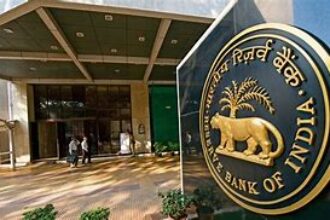India’s banking system is currently facing a liquidity crunch, meaning there is less money available in the financial system for banks to lend and businesses to operate smoothly. This situation has been developing over the past few months, putting pressure on banks and increasing borrowing costs. To address this issue and maintain financial stability, RBI has announced a series of measures to improve liquidity in the market.
One of the key steps the RBI is taking is purchasing government bonds through Open Market Operations (OMO). In simple terms, this means that RBI will buy bonds issued by the Indian government, injecting cash into the financial system. The central bank has planned two such bond purchases, each worth ₹50,000 crore – one on March 12, 2025, and the other on March 18, 2025. These purchases, totaling ₹1,00,000 crore, will help increase the availability of funds in the market, making it easier for banks to lend and for businesses to access credit.
In addition to buying bonds, the RBI will also conduct a special currency operation known as a USD/INR Buy/Sell Swap auction on March 24, 2025. Through this process, RBI will buy US dollars from the market and, in exchange, release Indian rupees. This swap is designed to provide more rupees into the banking system while ensuring that the foreign exchange market remains stable. The swap has a tenor of 36 months, meaning that after three years, the dollars will be sold back, reversing the transaction.
The need for these measures has arisen due to a shift in liquidity conditions. Just a few months ago, in November 2024, the financial system had a surplus of ₹1.35 lakh crore, meaning there was excess money available. However, by December, this turned into a deficit of ₹0.65 lakh crore, indicating a shortage of funds. The situation worsened in January 2025, with a liquidity shortfall of ₹2.07 lakh crore, and in February, the deficit stood at ₹1.59 lakh crore. This tightening of liquidity has made it more difficult for banks to lend money and has increased borrowing costs for businesses and individuals.
When liquidity tightens, interest rates tend to rise, making loans and credit more expensive. This affects businesses, as they need capital to expand, and individuals, who may find it harder to secure home loans, car loans, or other financing. A liquidity crunch can also lead to market instability, as financial institutions struggle to balance their cash flows. By injecting liquidity through OMOs and currency swaps, RBI aims to ease these pressures, ensuring that the banking system has enough funds to operate efficiently.
While the immediate impact of these measures may not be felt overnight, they are expected to provide relief to banks and businesses in the coming weeks. By improving liquidity, RBI is working to create a more stable and predictable financial environment, benefiting the overall economy.







